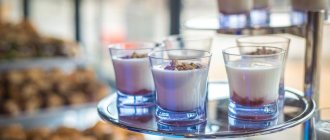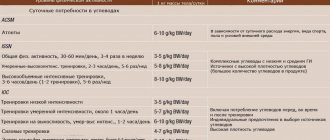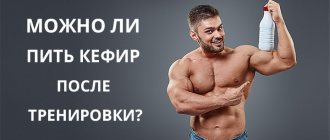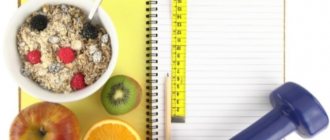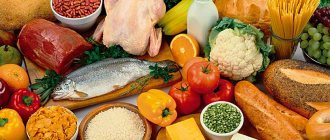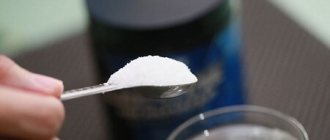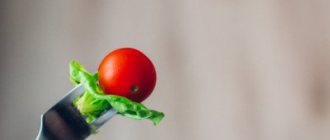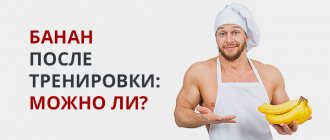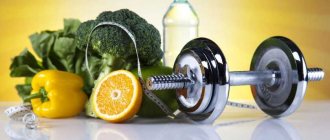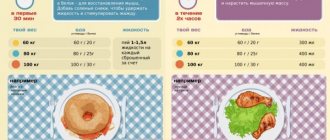Pre-workout nutrition
Best Pre-Workout Meals:
- lean steak with potatoes;
- poultry (chicken breasts, turkey) with rice or coarse bread;
- egg white omelette with oatmeal.
The caloric content of food before training should be the same as at other times. It is advisable to eat a large bowl of soup or a portion of salad 1-2 hours before training so that it is digested and the stomach is empty. More dense food (half a plate of cottage cheese or porridge) can be eaten 30 minutes or 1 hour before starting a workout.
If you are training to build muscle, then 30 minutes before training, eat 1 large low-glycemic fruit (pear, strawberry, apple or other berries) and wash it down with a protein drink mixed with water (preferably whey protein). The protein calculation in this cocktail will be as follows: 0.22 g of whey protein per 1 kg of weight. For example, if your weight is 68 kg, then the shake should contain 15 g of protein.
Also, half an hour before training, drink a glass of black coffee (you can add sweetener, but not cream) or strong green tea. This will help the secretion of norepinephrine and epinephrine, which mobilize fat from fat cells for the body to use as fuel. This way, during training, you will be able to burn more fat and less glycogen, glucose and amino acids.
Fatigue during training will come much later. Your head will be clearer and the lesson will be more intense. The effect of the coffee you drink before training lasts about 2 hours. It is advisable not to eat anything immediately before training, since physical activity distracts from digestion (the rhythmic contractions of the stomach to digest food). As a last resort, if the feeling of hunger is very strong, you can drink a glass of milk or a protein shake.
Diet during training: top common mistakes
Common mistakes that many people make:
- unbalanced diet: eat nothing before training and eat too much after;
- use training as an excuse that you can eat anything because you just worked out;
- overeat to satisfy severe hunger after high loads;
- include harmful foods in the diet;
- Another extreme situation is when people believe that there is absolutely no need to eat anything after a workout. They are afraid that food can nullify all the efforts made in class. And they are mistaken;
- habit of not eating after 18.00. If you study in the evening, you can forget about it!
Exercising for an hour or more depletes the reserves of energy and water in the human body. And in order to feel good and happily begin subsequent workouts, you need to replenish your balance. Another very important thing is that by eating right after training, you can correctly start the metabolic mechanism the next day. Thus, a balanced diet and regular exercise will help you become slim much faster and more correctly than a strict diet and fasting days. Plus, you'll feel more resilient and happier.
How to calculate the calorie content of food after a gym session? You need to take into account how many calories you burned during exercise, and replenish the reserve by half of the received number.
Pulse and difficulty
The easiest way to determine the level of perceived exertion is by heart rate. Unfortunately, the method of determining difficulty on a ten-point scale of sensations does not work very well - it should be accompanied by an experienced trainer. Very often we underestimate ourselves and set the difficulty level of an exercise, for example, at 8 out of 10, while a coach from the outside will easily notice that this is only 5 out of 10 - and you are capable of doing much better. But if a professional trainer works with you, such as at the Fresh Fitness fitness center , then you don’t need to find out the effectiveness of the workout yourself - it will be determined by him.
Find out your normal heart rate by counting or using a heart rate monitor. Heart rate monitors are often found on popular exercise equipment, so this does not involve the purchase of additional equipment. There are many formulas by which you can find out the maximum permissible heart rate, and many of them require calculations. As a rule, good simulators have tips on how to calculate the effective level of loading based on your heart rate for your age. The simplest (and imperfect) formula is to subtract your age from 220 if you are a man and 226 if you are a woman. The resulting figure is your maximum possible heart rate during training, which is not recommended to be reached at all. It is best to work within 60-70% percent of this number.
Post-workout nutrition
It should be noted that after exercise you must first replenish the lack of water. You can eat something from the following list. Post-workout food must contain protein. Protein is needed per 0.5 g of 1 kg of weight.
- chicken fillet (boiled, oven-cooked or steamed, but without oil and spices);
- skim cheese;
- egg whites;
- low-fat fish (baked or boiled without seasoning, you can add lemon juice);
- fresh fruit;
- low fat ice cream;
- freshly prepared vegetable juice, vegetable salad (cabbage, peppers, cucumbers, tomatoes, onions, herbs, etc.);
- milk and cereals;
- fruits (orange, apple, grapefruit) or dried fruits;
- a handful of unsalted nuts.
Nutrition during training for weight loss: what not to do?
There is no need to indulge in high-fat foods. The fact is that lipids significantly slow down the rate of absorption of nutrients, as well as proteins and carbohydrates. Also, for 2-2.5 hours after training, you should avoid drinks containing caffeine.
Here is a list of what you definitely should not include in your diet:
- sausage sandwiches;
- fried foods;
- buns and other flour products;
- various sweets with coffee or tea.
Poor nutrition before and after training can not only cause discomfort during exercise, but also make it completely useless or even harmful. Nutrition should be selected depending on your goals.
How it shouldn't be
After a workout, you shouldn't feel completely exhausted. Let’s make a reservation right away that this does not apply to complete beginners in fitness who are trying to immediately evaluate the first week of classes. You need to properly evaluate the effectiveness of training after it has become a habit, or after you have been engaged in one type of active activity for a long time, and then decided to try something new and changed classes. Beginners can really feel overwhelmed after the first week of training, but this usually goes away by the second week.
If after class you sleep poorly and fitfully, feel deprived of energy and so tired that you don’t want to do anything, then you overworked yourself. Underload is more difficult to recognize, since even a little activity has a good effect on well-being, but we will now learn how it can be determined.
Diet after cardio training
What should joggers or other cardio exercise eat after exercise? Here, first of all, it is necessary to restore glycogen, the so-called storage carbohydrate. During training, blood glucose is first consumed, then glycogen reserves are used, and only then adipose tissue is used. If you don't replenish your glycogen stores immediately after training, it won't happen on its own soon. Your metabolic processes will slow down and your endurance will decrease.
15 minutes after class, it is recommended to drink a smoothie, milkshake, water with carbohydrates, freshly squeezed juice or eat fruit. By the way, this is the very moment when freshly squeezed juice with a high content of quickly digestible carbohydrates is really useful. In other cases, slow carbohydrates are preferable.
Diet after strength training
What you should eat after strength training is a completely different question. In this case, your main task is to strengthen your muscles and build muscle mass. In post-workout nutrition, your task is to comply with the rule of the so-called metabolic window. Within 2 hours after class you should definitely eat some high protein food. It could be cottage cheese or lean meat, a protein shake, poultry or fish.
But 2 hours is quite a long time. Fitness experts advise reducing this period to 1 hour, so that you don’t end up eating only after 3-5 hours. Is it possible to eat immediately after class? Of course, this is even better. Take with you, for example, fruit or cottage cheese. Or go to a cafe and choose what suits you. If you have been doing moderate exercise, you should eat up to 40 g of carbohydrates after exercise. For those who exercise at high intensity, it is recommended to eat up to 60 g per 1 hour of training.
But lack of nutrition after exercise can lead to muscle atrophy. As a result, you risk getting not a beautiful and elastic figure, but poor health, weakness, and nervousness. In addition, proper nutrition after training will allow you to properly start your metabolism the next day. If you burn 400 kcal or more in an hour of fitness, your metabolism will accelerate by 8-10% and return to its previous state only after a day. And if you eat right all this time, you will lose weight and improve your body composition.
What should you eat to lose weight?
As you know, within 40 minutes after fitness you need to take protein foods along with carbohydrates from vegetables and fruits. Fitness girls are concerned about the question: is it possible to replace the carbohydrate part with juices, because you are usually very thirsty? Why not?! Usually in this case they drink a smoothie with whipped kefir/cottage cheese or a protein shake, enriching it with juice. We can do the same or simply drink the juice along with any easily digestible protein (for example, cottage cheese, boiled chicken). But here it is important to follow certain rules.
Drinking regimen during exercise
The most important thing during the training process is to drink regularly!
Even with 2% dehydration of the body, the exercise becomes sluggish and ineffective. There is no need to focus on the feeling of thirst. Active exercise suppresses the function of thirst receptors in the throat and gastrointestinal tract, so by the time you become thirsty, your body will already be dehydrated. Additionally, the body's thirst sensors become less sensitive as we age. This is why adults should drink water because they need to, and not because they want to. If you notice the following symptoms of dehydration (2 or more): dry mouth, thirst, irritability, dry or cracked lips, headache, lack of appetite, fatigue, dizziness, start drinking water immediately and stop exercising until symptoms subside. will pass. The drinking regime should be as follows: immediately before training, drink a glass of water and during exercise, drink a little every 15-20 minutes. The amount of water you drink depends on the volume of sweat.
In short, a properly selected diet and set of workouts will help you become healthier and slimmer.
And this advice: to avoid eating on an empty stomach, think in advance about what you will eat after training! Author Yulia Karpukhina
Muscles
Even if we attend not strength training, but any other type of fitness, it primarily affects our muscles. Well-developed muscles guarantee us success from training. Therefore, it is from them that you can understand how well you worked out today. You most likely won’t be able to tell by eye in front of the mirror. So there are two good ways to find out how your muscles worked today. Of course, you should only check those muscle groups that were actively involved in the workout.
The first way is physical. Feel them. Overworked muscles swell slightly, very often this process is accompanied by a burning sensation, and after a few hours - relaxed fatigue.
The second way is visual. Take a photo of the desired muscles before training, and then after. You just can’t see the difference in the mirror, but in the photo it’s obvious.
